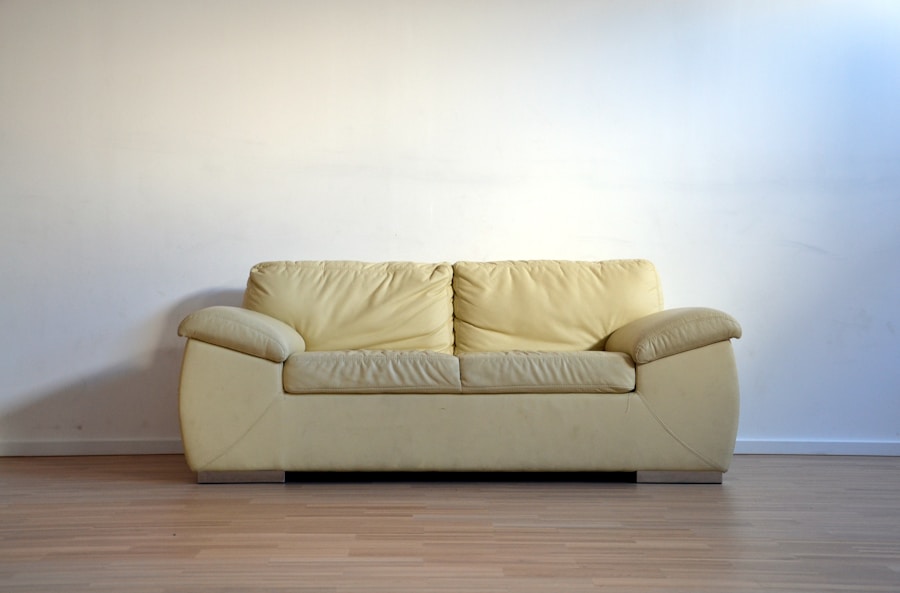Minimalist design is a style that focuses on simplicity and functionality. It is characterized by clean lines, simple shapes, and a lack of clutter. The goal of minimalist design is to create a space that is calming and uncluttered, allowing the focus to be on the essential elements of the room. This style is often associated with a sense of tranquility and order, as it eliminates unnecessary distractions and allows for a more peaceful environment.
In minimalist design, less is more. This means that every element in the room should serve a purpose and contribute to the overall aesthetic. This can be achieved through careful selection of furniture, decor, and color palette. By embracing minimalist design, you can create a space that feels open, airy, and inviting.
Consider Functionality
When designing a minimalist space, it’s important to consider the functionality of each element. This means choosing furniture and decor that not only looks good, but also serves a practical purpose. For example, a minimalist sofa may have clean lines and simple shapes, but it should also be comfortable and durable. Similarly, a minimalist dining table should be able to accommodate the needs of the household, whether that means seating four people for dinner or providing a workspace for remote work.
By prioritizing functionality, you can ensure that your minimalist space is not only aesthetically pleasing, but also practical and livable. This approach can help you avoid clutter and unnecessary items, as everything in the room will have a purpose.
Focus on Quality Materials
In minimalist design, the focus is on quality over quantity. This means choosing furniture and decor made from high-quality materials that will stand the test of time. When selecting pieces for a minimalist space, consider materials such as solid wood, metal, glass, and natural fibers. These materials not only have a timeless appeal, but they also tend to be more durable and long-lasting.
By focusing on quality materials, you can create a space that feels luxurious and well-crafted, even with minimal decor. Investing in well-made pieces can also save you money in the long run, as you won’t need to replace them as frequently as cheaper alternatives.
Embrace Neutral Colors
One of the hallmarks of minimalist design is a neutral color palette. This means using colors such as white, beige, gray, and black to create a sense of calm and simplicity. By embracing neutral colors, you can create a cohesive and harmonious space that feels serene and uncluttered.
Neutral colors also have the benefit of being versatile and timeless. They can easily be paired with different accent colors or decor styles, allowing you to change up the look of your space without needing to completely overhaul the design. Additionally, neutral colors can help to make a room feel larger and more open, which is especially beneficial in smaller spaces.
Opt for Clean Lines and Simple Shapes
Clean lines and simple shapes are key elements of minimalist design. This means choosing furniture and decor that has a streamlined and unadorned look. For example, a minimalist sofa may have straight arms and a low profile, while a minimalist coffee table may have a simple rectangular shape.
By opting for clean lines and simple shapes, you can create a sense of order and balance in your space. These elements also help to create a cohesive look throughout the room, as they can be repeated in different pieces of furniture and decor.
Prioritize Multi-functional Pieces
In a minimalist space, it’s important to make the most of every item. This means prioritizing multi-functional pieces that can serve more than one purpose. For example, a storage ottoman can provide seating as well as hidden storage for blankets or books. Similarly, a dining table with extendable leaves can accommodate both everyday meals and larger gatherings.
By prioritizing multi-functional pieces, you can maximize the use of your space while minimizing clutter. This approach can also help you make the most of a smaller space, as each item serves multiple purposes.
Take Measurements and Consider Scale
When designing a minimalist space, it’s important to take accurate measurements and consider scale. This means ensuring that furniture and decor are appropriately sized for the room and its proportions. For example, a large sectional sofa may overwhelm a small living room, while a tiny side table may get lost in a spacious bedroom.
By taking measurements and considering scale, you can ensure that your minimalist space feels balanced and well-proportioned. This approach can also help you avoid clutter and overcrowding, as each piece will have its own designated space within the room.
In conclusion, minimalist design is a style that prioritizes simplicity, functionality, and quality. By embracing clean lines, neutral colors, and multi-functional pieces, you can create a space that feels calm, uncluttered, and inviting. With careful consideration of materials and scale, you can design a minimalist space that is both practical and aesthetically pleasing. Whether you’re designing a small apartment or a spacious home, minimalist design can help you create a space that feels open, airy, and harmonious.
